FOR US, FRAMES ARE IMPORTANT, BUT SO ARE THE TOOLS THAT HAVE BECOME PART OF OUR EVERYDAY LIVES IN THE WORKSHOP.
photography by Rein de Wilde and Mathieu Teissier
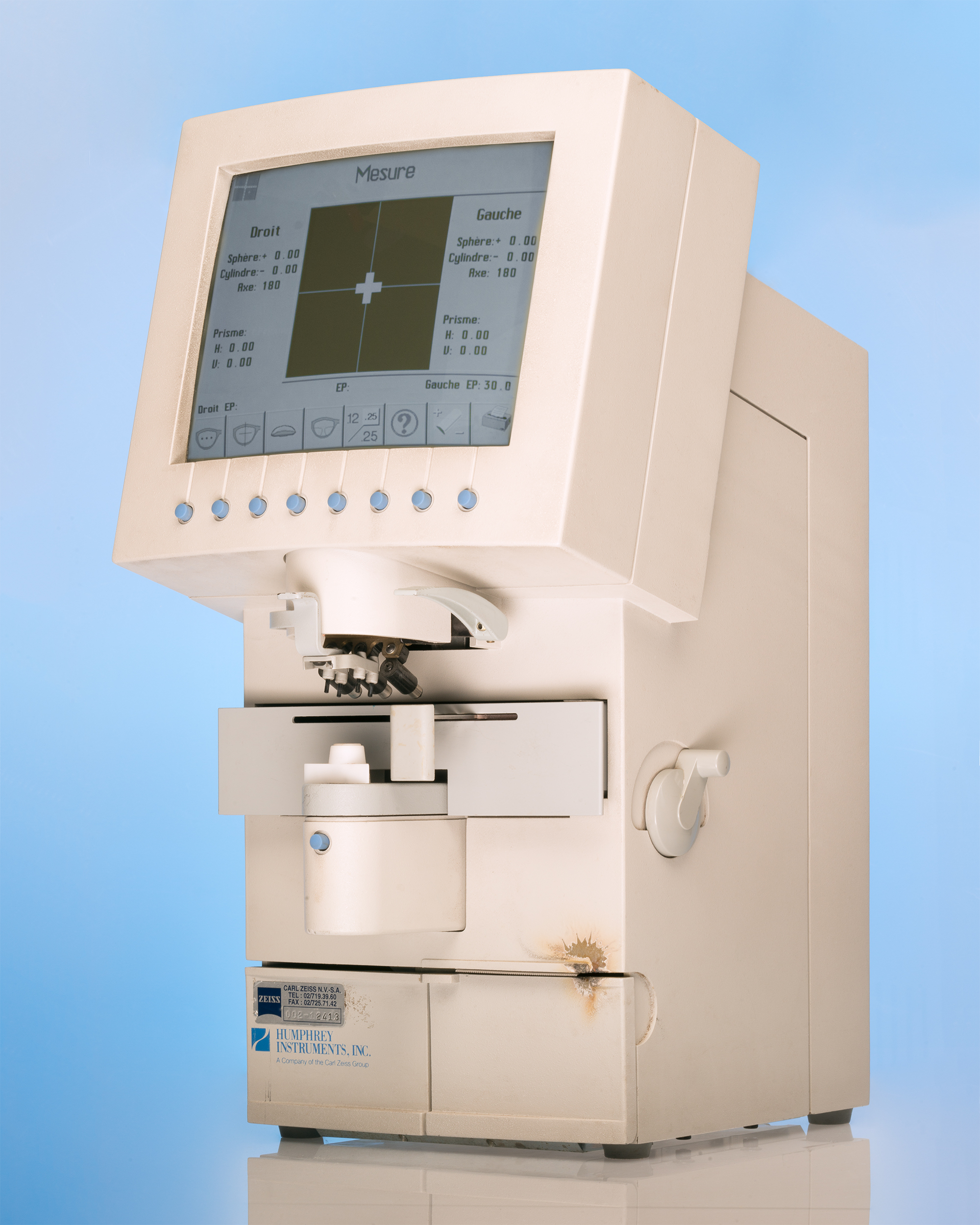
WE LOVE TOOLS, TOOLS WE LOVE
Yes, we still love frames. But the frames are only possible with the support of our tools. Honestly, tools are so important to us that we would be lost without them. Good (old) frames, good (old) tools, and good (old) habits go hand in hand.
Tools are a big part of our everyday lives in the workshop. They give us the opportunity to repair and refresh frames, provide quality eye tests, and guarantee a comfortable vision. Besides that, they give us the freedom to experiment, transform, learn, challenge ourselves, and find sustainable solutions on all levels.
Like our frames, the tools have a story as well. Some of them have been part of the family for decades, some are brand new and let our geeky side come out, some have an amazing, functional design, and others bring us closer to old and sometimes forgotten opticians’ habits.
Here and there we have already introduced you to some of our tools, but there’s so much more to say about them. The Humphrey Instruments Zeiss Optical Lens Analyser (LA360) is a great one to start with. This tool covers everything we’ve talked about so far.
Not only do we love this tool because it looks like a computer from the 80s, it also gives us the most reliable measurement of the optical power of corrective lenses, which is very important to provide a comfortable vision. And a big plus: it’s been part of the family since the 1990s.
Let’s introduce more tools that we love.
PD-METER
Pupillary Distance (PD) is a serious thing, that’s why we have this serious-looking PD-meter. This tool measures the distance in millimeters between the pupils and the distance from each pupil and the middle of the nose bridge. With the handle at the bottom, we decide at which distance we want to measure the PD. The measurement is very important because it determines the position of corrective lenses. An inaccurate PD measurement can cause a blurry and uncomfortable vision or even double vision, headache, and nausea.
So nah – we’re not gonna ask you to measure your own pupillary distance with your webcam or a ruler. We go for precision and just enjoy using this PD-meter too much. It’s a family heirloom: it once belonged to Robert, Bidules’ great-grandfather. It has probably seen a few thousand eyeballs, including these ones, since he started using it back in the 1980s. And there are so many more it wants to see!
By the way: did you know most pupillary distances are asymmetrical?
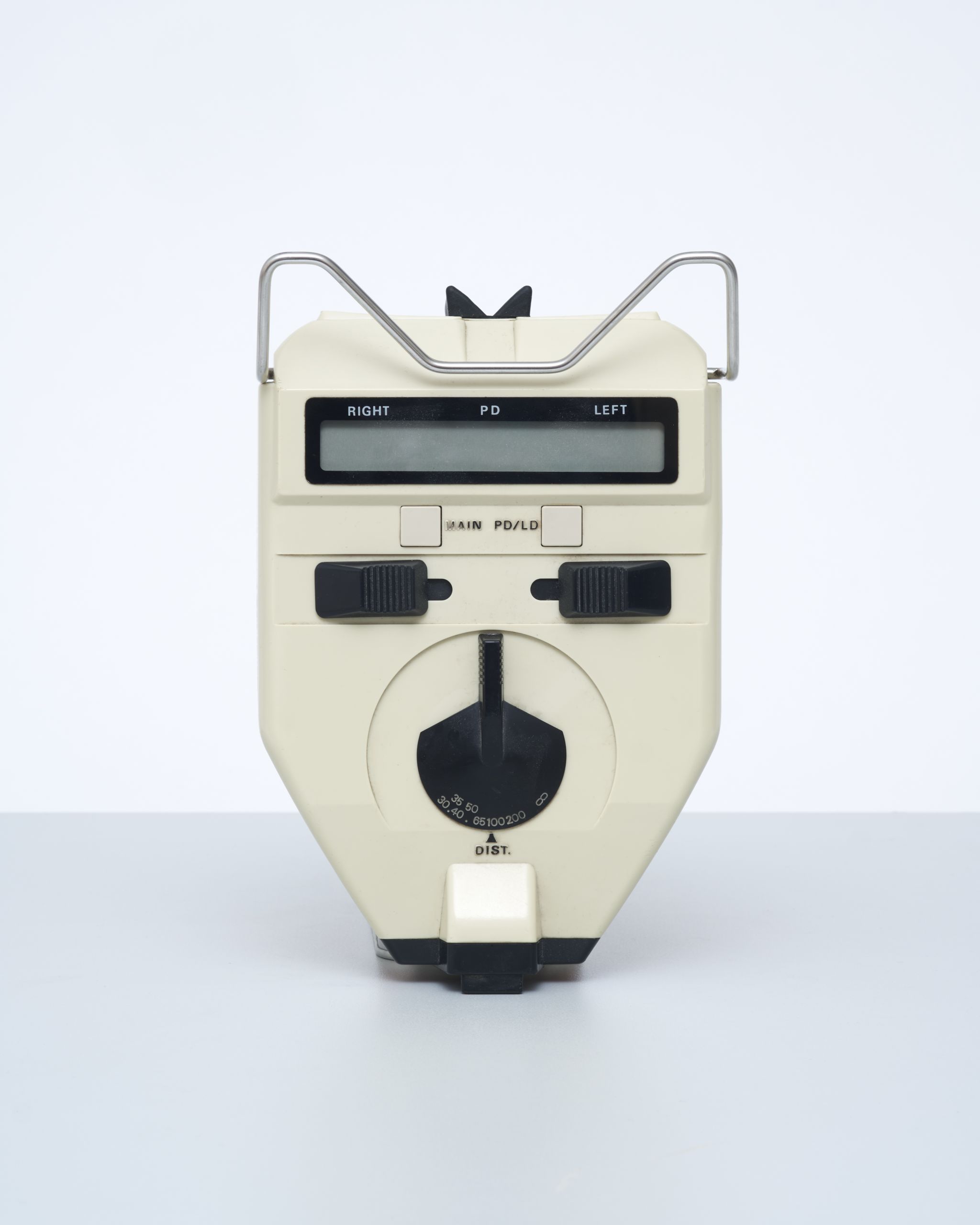
SOLDERING TOOL
Did you break your favourite metal frames? This is the perfect situation for us to bring out our soldering tool. We love nothing more than challenges and salvaging frames. Especially if we get to use fire.
We make sure lenses and plastic nose pads are removed before starting. The next and best step is creating a flame with oxygen and gas. We’re going for a little blue flame: when it’s orange, it means that it hasn’t reached the needed temperature yet. At the tip of the blue flame (1200°c), we melt a soldering stick and add a drop of liquid to the broken parts. Both parts are connected and held together by the solder. After the frames are cooled, they will be cleaned, polished, and ready to be used again.
No worries if you sat on your plastic frames. We have another technique to repair acetate, which is less aesthetically pleasing, but still a lifesaving method for your frames.
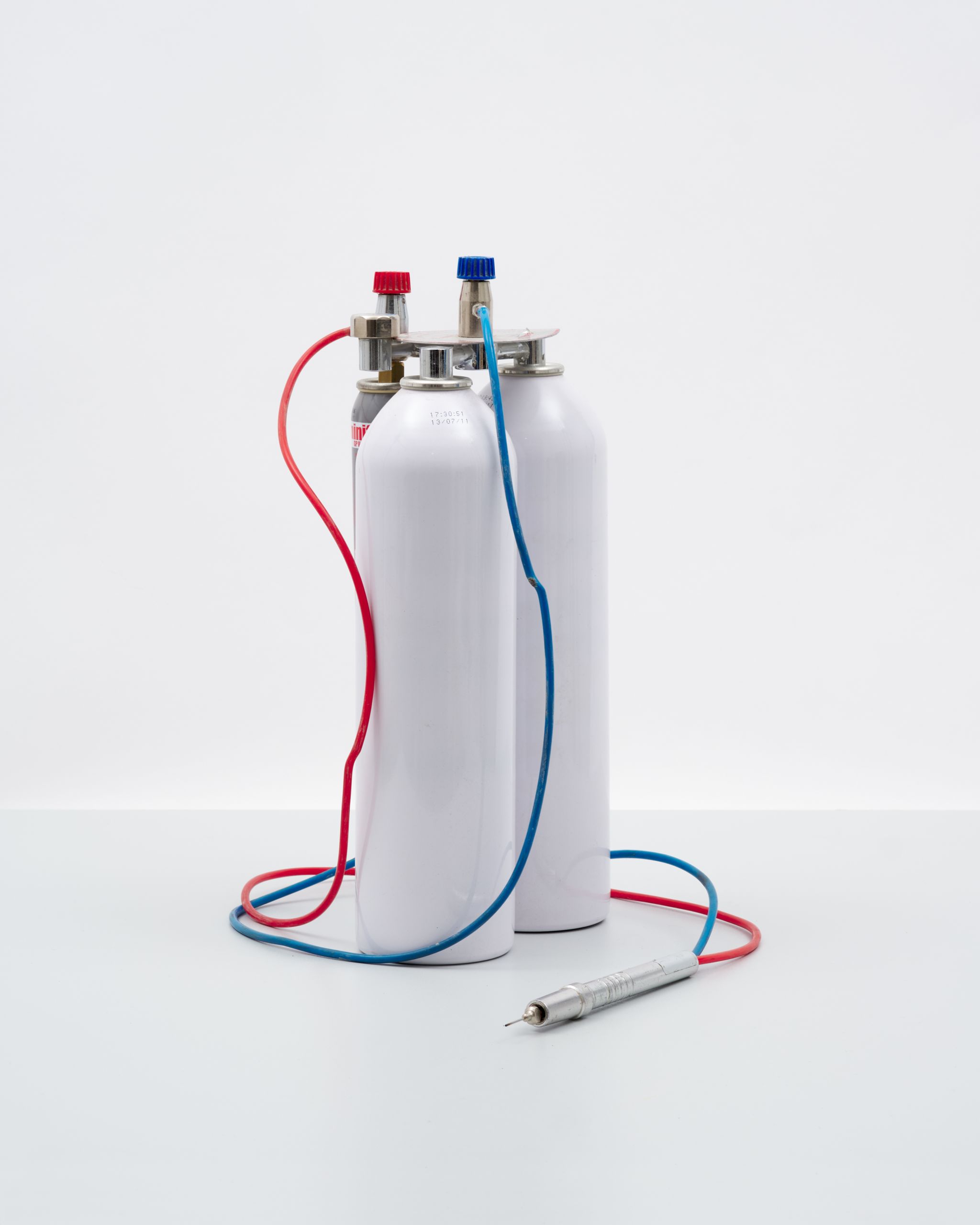
The more time I spend as an optometrist, the more I realize that good vision is a basic need and not a luxury – it improves quality of life. The largest part of what we perceive is through our eyes, so we really need to take care of them.
Bidules’ Optometrist, Ellis
PHOROPTER
Can I get my eyes tested at Bidules? A question that many have asked. The answer is yes, please do! Our optometrists offer comprehensive eye examinations combining top-notch technology and good old-fashioned ophthalmic tools, like this mechanical phoropter (mod.11625 by American Optical). This beauty is not visible because it’s hidden in our eye testing room downstairs – but in fact, it’s the centerpiece of Bidules. The phoropter is mainly used to manually measure the refractive error, e.g myopia, hypermetropia, astigmatism, and presbyopia. During the eye exam, the optometrist will ask you to read letters and will switch lenses in front of your eyes. The lenses have different optical powers and you will have to choose the best one. This process determines the eyeglasses prescription that comes closest to a 10/10 vision.
This phoropter is highly reliable and connects our optometrists to the work and the patient more than using an automatic one. The fact that this type of phoropter is still used in all optometry schools in the country – and that it looks like it came straight out of a constructivist delirium of the former USSR – explains enough. It’s simply brilliant and serves as the basis of a good eye examination, and therefore good eyesight.
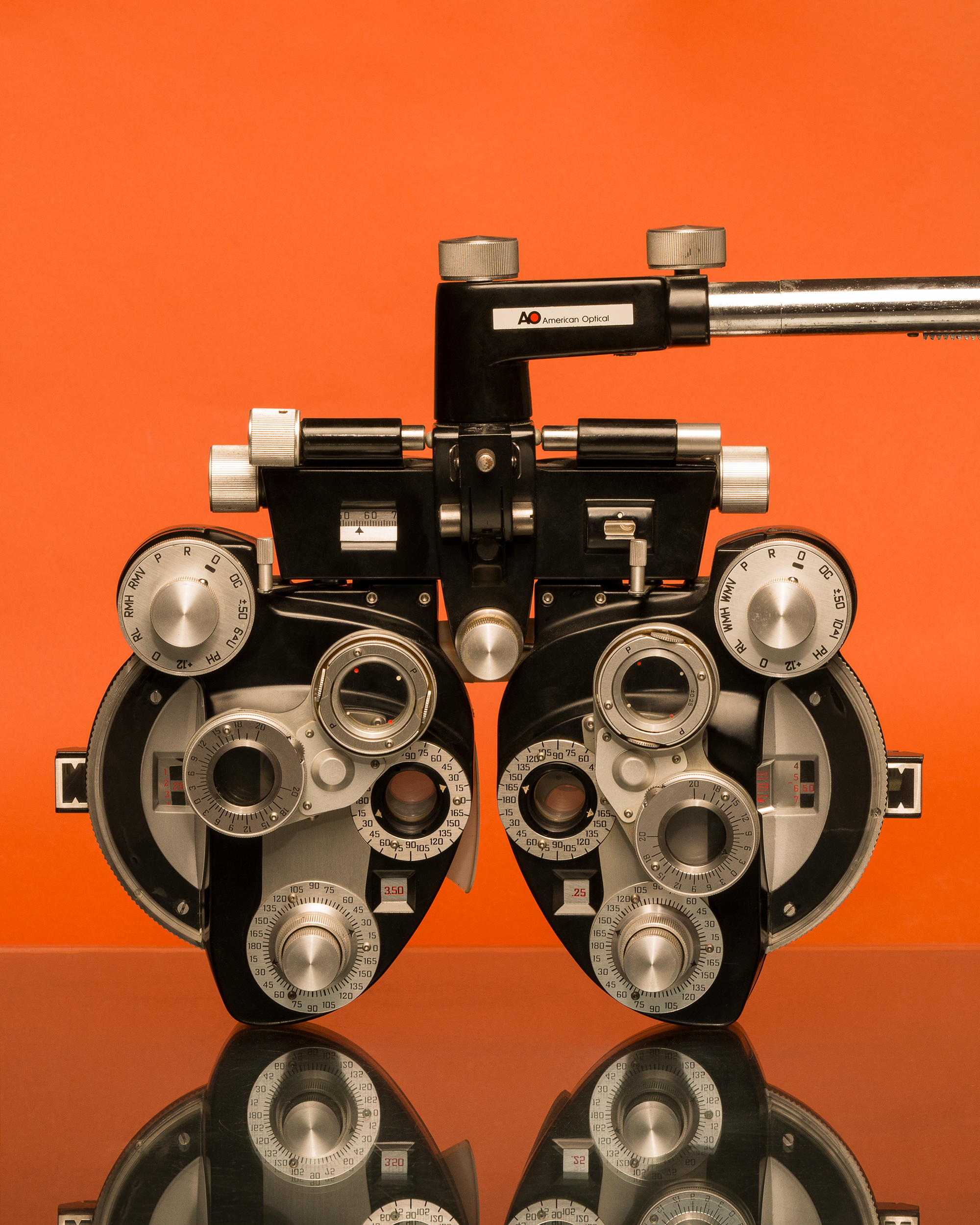
POLISHER
Back in the 70s and 80s, what some might call the golden age of optics and eyewear, polishers were part of opticians’ daily lives. In those days, whether eyewear was made of acetate or metal, it was polishable. And, because the lifespan of frames back then was closer to that of a European rabbit than that of an inkjet printer, it was common for the frames to survive through several pairs of lenses. So from time to time, it was normal for the frame to be completely dismantled, brushed, cleaned and polished, with worn parts (pads and tips) taken back to the drawing board and switched up.
It looks like we’ve never left the golden age, since we work with frames from that era and ‘wear – use – polish – repeat’ is our daily anthem. We still use this polisher every day: to refresh a new arrival of frames we brought back or eyewear from our community whether these are Bidules or not. So, whether two years and five days, or ten years, you and your glasses will always get the same welcome.
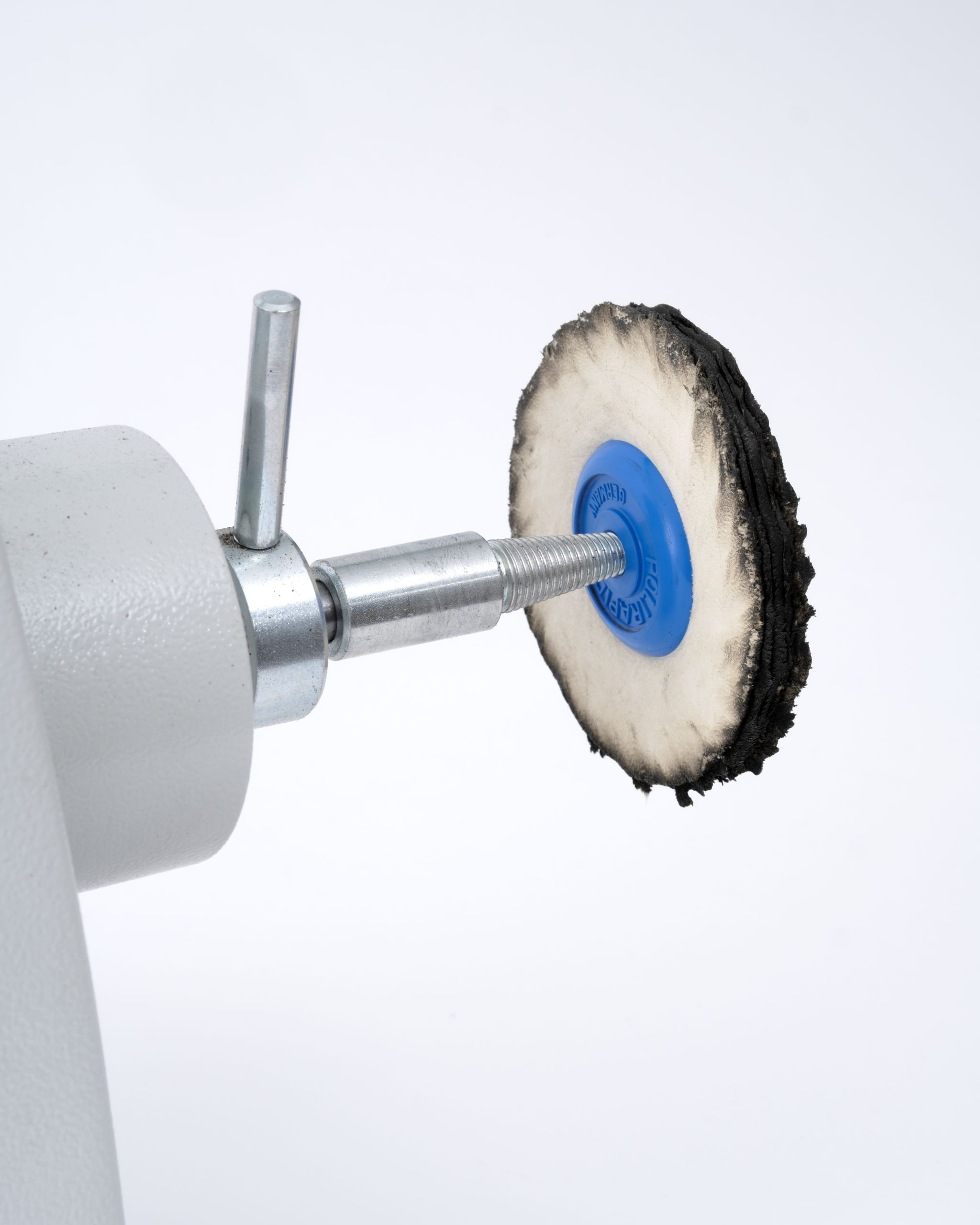
FRAME HEATER
Even without fire and flames we like hot temperatures. Acetate frames are easily adjustable with the use of a frame heater. When acetate warms up, it gets flexible and bendable. So this is the solution when your acetate frames are slipping down your nose, aren’t straight anymore, or are too tight behind the ears.
Especially for us, the frame heater is a highly important tool. The frames we bring back from our digging trips haven’t been touched for years and have lost their original shape. We mostly find them back somewhat crooked in boxes. As acetate material dries, it loses some of its water content and contracts. Without heating the frames first, they risk breaking.
We restore every frame manually and we even upgrade some of them by giving them a better shape.
We also have tons of archive material about tools, factories, and all the other pieces of the puzzle that go into making dope glasses. If you’re interested in other nerdy eyewear related stuff feel free to take a look at FRAMES our free-fanzine, or our archives at the store.
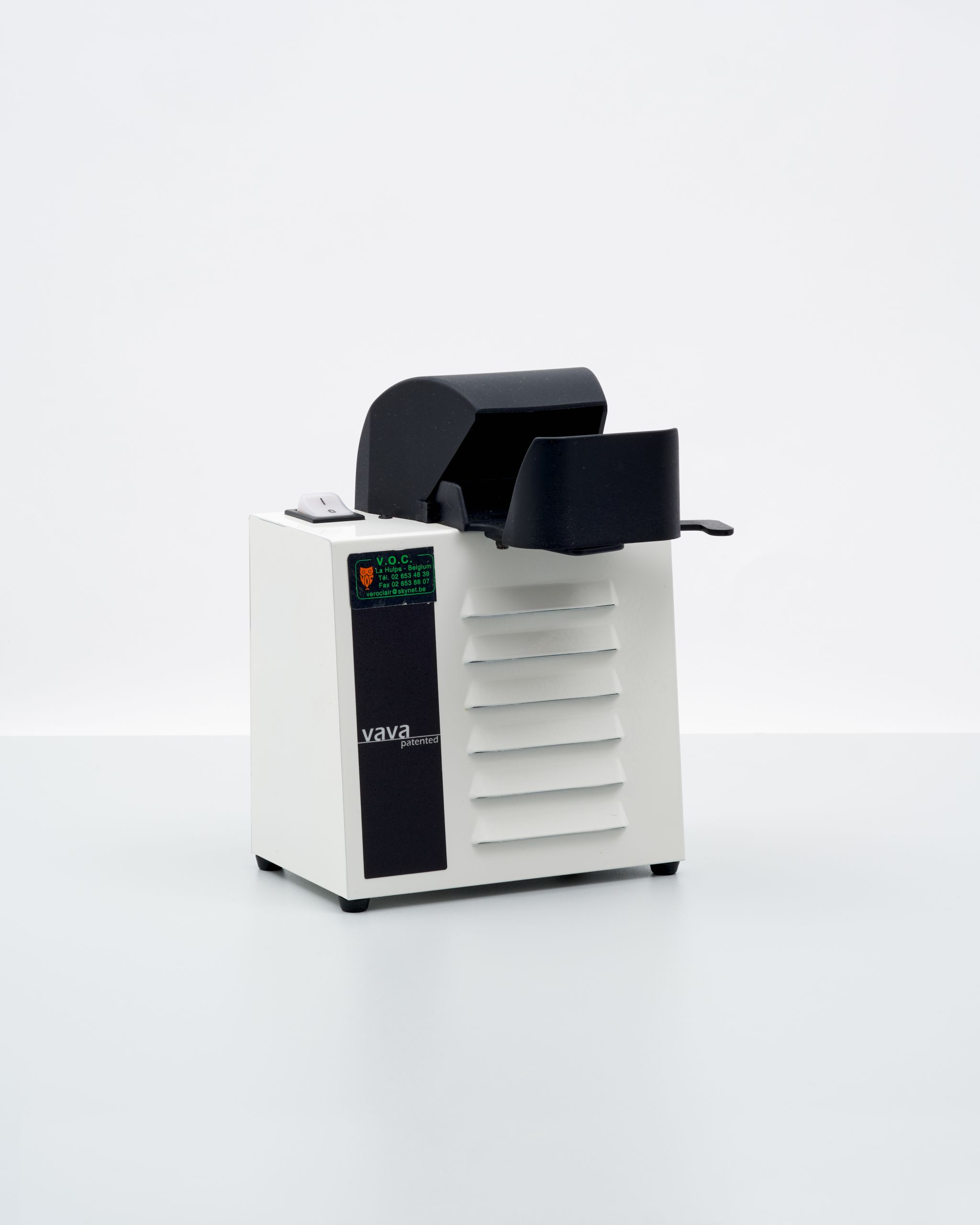
Now we focus on training our staff and improving our techniques. Nevertheless, we’re always on the lookout for more tools, and with them the discovery of the golden methods set by our ancestors in optics. We love to combine this with ultra modern ways of repairing, salvaging, and experimenting.
Come *see* for yourself! Stop by the store if you need a clean, a fix, or even a beer, we’d be happy to see you!
It’s on us, anytime.







